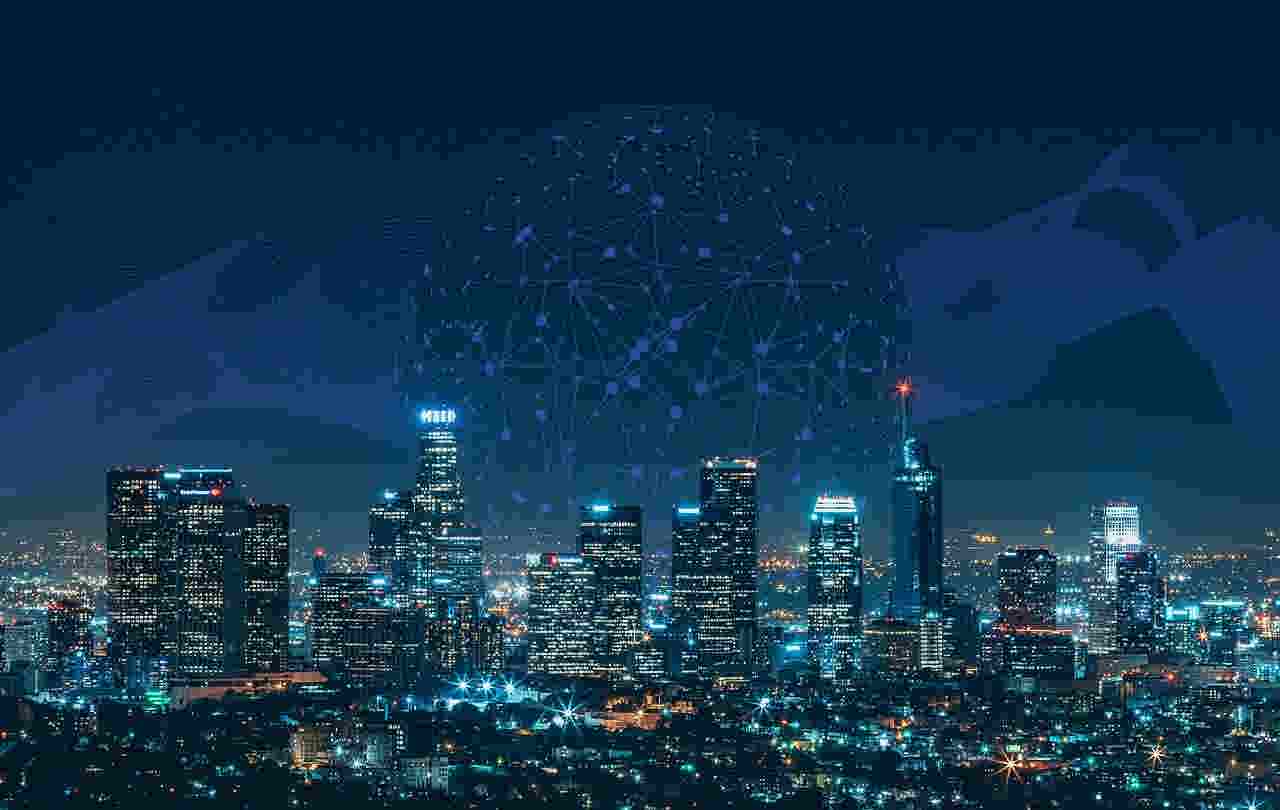Close your eyes and picture a city. For many of us, the first image that comes to mind is a crowded street, filled with cars honking in traffic, buildings towering over narrow sidewalks, and people rushing by, disconnected from one another. That’s what urban life has looked like for most of the 20th and early 21st centuries: busy, noisy, polluted, and sometimes overwhelming.
But something extraordinary is happening. Cities are no longer just collections of buildings and roads. They’re becoming intelligent, adaptive, and human-focused. Urban living is evolving faster than at any other point in history. Climate change, digital technology, and social transformation are pushing us into a new era of living—and leading this revolution is the concept of Simpciry.
Understanding Simpciry: More Than Just a Smart City
The term “smart city” has been used for years, but in practice, many so-called smart cities still focus more on technology than people. They add sensors, install cameras, or deploy apps but often forget the deeper purpose: to make life better, simpler, and more connected for humans.
Simpciry flips this narrative. The very name—born from simplicity and city—captures the essence. A city should not confuse its people with complexity. It should support them effortlessly. In Simpciry, technology is invisible yet powerful, sustainability is standard, and community is at the core.
How Simpciry Differs from Traditional Cities
Traditional cities are reactive. They expand when populations grow, they adapt when problems arise, and they often patch solutions instead of redesigning systems.
Simpciry, however, is proactive. It’s designed from the ground up with foresight, integrating solutions before problems even emerge.
For example, instead of building highways to reduce traffic (which often creates more traffic), Simpciry designs transportation networks that eliminate the need for private cars altogether. Instead of fighting pollution after it’s a crisis, Simpciry runs on renewable energy by default.
This philosophy shifts the role of cities from being just living spaces to being living ecosystems.
The Core Pillars of Simpciry
Simpciry is not just about adding “smart” gadgets to cities. It’s about rethinking the very essence of urban life. Imagine a place where homes anticipate your needs, where cars are silent and emission-free, where public spaces are designed for connection, and where nature blends seamlessly with innovation. That’s what Simpciry stands for: a city designed for people, powered by technology, and sustained by nature.
This blog will take you on a journey into the world of Simpciry—what it is, how it works, why it matters, and what it means for the future of humanity. By the end, you’ll see that Simpciry isn’t just another futuristic dream. It’s a revolution that’s already underway.
Simpciry stands firmly on four interconnected pillars. Together, they create a city that feels alive, efficient, and human-friendly.
1. Sustainable Living: The Green Foundation
Sustainability in Simpciry isn’t about adding a few solar panels or planting some trees. It’s embedded in the city’s DNA. Every decision—from how energy is generated to how waste is handled—prioritizes the planet.
Buildings are designed with green rooftops and vertical gardens that reduce heat and clean the air. Water recycling systems capture rainwater and reuse it for irrigation. Streets are lined with trees, not just for beauty, but for cooling, carbon absorption, and psychological well-being.
The result is a city where you don’t need to “try” to live sustainably. It happens naturally, built into the infrastructure around you.
2. Smart Technology: The Invisible Backbone
Technology in Simpciry works like electricity—it’s everywhere, but you don’t always see it. AI manages traffic lights, IoT devices monitor air quality, and sensors optimize energy consumption in real-time.
For instance, imagine walking into your apartment after a long day. The temperature has already adjusted to your preference. The fridge has suggested dinner recipes based on what’s inside. Your AI assistant reminds you of tomorrow’s schedule. This isn’t luxury—it’s standard living in Simpciry.
3. Mobility and Accessibility: A City Without Traffic Jams
Transportation is one of the biggest challenges in traditional cities. Long commutes waste time, pollute the environment, and drain energy. In Simpciry, transportation is redesigned entirely.
Electric buses, shared autonomous vehicles, and bike lanes dominate the infrastructure. Instead of car ownership, mobility becomes a service—you simply request a ride and it arrives in minutes. Pedestrian-friendly streets ensure people feel safe walking or cycling. The emphasis is not on speed alone, but on comfort, accessibility, and eco-friendliness.
4. Community-First Approach: People at the Heart
Many cities unintentionally isolate people. Apartments are stacked high, offices are rigid, and public spaces feel cold. Simpciry solves this by prioritizing connection.
Community centers, co-working hubs, cultural venues, and parks are spread across neighborhoods. Affordable housing ensures diversity. Festivals and local markets are encouraged to strengthen bonds. The city becomes not just a place to live, but a place to belong.
Urban Lifestyle Redefined
So what does it actually feel like to live in Simpciry? Let’s walk through a typical day.
You wake up in a smart home that has gradually adjusted the lighting to mimic the sunrise. Your window blinds open automatically, revealing a skyline filled with greenery rather than smog. As you head to the kitchen, your fridge has already suggested a healthy breakfast based on your dietary habits and local produce availability.
On your way to work, you step into a clean, quiet autonomous shuttle that takes you through car-free streets lined with trees. No traffic jams, no honking horns—just smooth travel. At work, you sit in a shared innovation hub surrounded by greenery, sunlight, and collaborative spaces. Productivity feels natural, not forced.
In the evening, you stop by a community farm to pick fresh vegetables for dinner. Later, you join neighbors at an open-air cinema in the park. Your day ends peacefully, supported by technology and surrounded by community.
That’s the lifestyle Simpciry offers: a balanced, sustainable, and deeply human urban experience.
Green and Clean Living
The green philosophy of Simpciry deserves special attention because it’s not an afterthought—it’s a centerpiece.
Renewable Energy Everywhere: Solar panels cover rooftops, wind turbines generate clean power, and energy-sharing grids distribute electricity efficiently. No reliance on fossil fuels.
Urban Farming: Instead of importing food across continents, Simpciry grows much of its own produce. Vertical farms inside skyscrapers, rooftop gardens, and community plots reduce food miles and boost freshness.
Waste as a Resource: Smart bins separate trash instantly. Organic waste is composted. Plastics are recycled into construction material. In Simpciry, “waste” doesn’t exist—it’s always repurposed.
Nature Built Into Architecture: Walk through the city and you’ll notice greenery at every level—from ground parks to rooftop forests. It’s not just beautiful; it reduces heat, cleans the air, and improves mental health.
This integration of nature and technology creates a city where people feel not trapped by concrete, but embraced by life.
The Role of Technology in Everyday Life
Technology is the invisible magic of Simpciry. It doesn’t scream for attention, but it shapes every experience.
AI in Governance: No more waiting months for licenses or permits. AI-powered systems process requests instantly. Citizens interact with their government through apps, with total transparency.
Smart Surveillance: Safety is ensured without intrusiveness. AI identifies unusual patterns, preventing crime before it happens, while still respecting privacy.
Data-Driven Living: From adjusting traffic flows to predicting healthcare needs, data ensures resources are used efficiently.
Personalized Experiences: Public transport adjusts routes based on demand. Educational platforms tailor lessons to each child. Healthcare apps monitor your health and connect you to doctors instantly.
Technology in Simpciry is not about showing off—it’s about making life smoother, safer, and more personal.
Economic and Social Impact of Simpciry
The rise of Simpciry changes more than daily life—it reshapes economies and societies.
New Careers: Jobs in AI, robotics, green engineering, and digital ethics emerge. Traditional jobs evolve with new tech-driven roles.
Entrepreneurship Hubs: Business districts transform into innovation zones filled with startups, co-working labs, and creators. Ideas flow more freely than traffic ever did.
Inclusivity and Equality: With affordable housing, universal internet, and shared public spaces, inequality is reduced. Technology benefits everyone, not just the elite.
Global Attraction: Investors, innovators, and visionaries flock to Simpciry because it represents the future of sustainable, profitable urban living.
Challenges and Criticisms
Of course, no vision is perfect. Critics of Simpciry raise valid concerns:
Privacy and Data: With so much reliance on AI and sensors, how do we prevent data misuse?
Affordability: Can the city remain inclusive, or will high costs drive out lower-income groups?
Over-Reliance on Tech: What happens during a system failure or cyberattack?
Cultural Concerns: Will too much automation strip cities of their cultural uniqueness?
These challenges highlight an important truth: technology must be guided by ethics, inclusivity, and human values. Without them, Simpciry risks becoming just another high-tech bubble.
Future of Urban Smart Living with Simpciry
Looking to the future, Simpciry could become the global model for urban life. Imagine:
Cities fully powered by renewable energy grids.
Transportation that’s 100% autonomous and emission-free.
Healthcare systems predicting community health trends before crises.
Citizens actively co-creating urban policies through digital platforms.
The next decade could see dozens of Simpciry-inspired cities across the globe. This isn’t just speculation—it’s already happening in places like Singapore, Dubai, and parts of Scandinavia where urban planning is merging with AI and sustainability.
The future of cities will not be measured in skyscraper height but in quality of life, sustainability, and inclusivity. That’s the promise of Simpciry.
Conclusion
Simpciry is more than a vision—it’s a movement. A city where sustainability is effortless, technology is invisible but powerful, and community is the heartbeat. It shows us that urban life doesn’t have to mean pollution, stress, and isolation. It can mean balance, belonging, and innovation.
It’s a promise of cities where children grow up breathing clean air, where work and leisure blend effortlessly, and where communities thrive alongside innovation. It’s a city where convenience doesn’t erase connection, and progress doesn’t sacrifice the planet.
The cities of yesterday were built for survival. The cities of today are built for convenience. But the cities of tomorrow—led by Simpciry—will be built for thriving.



